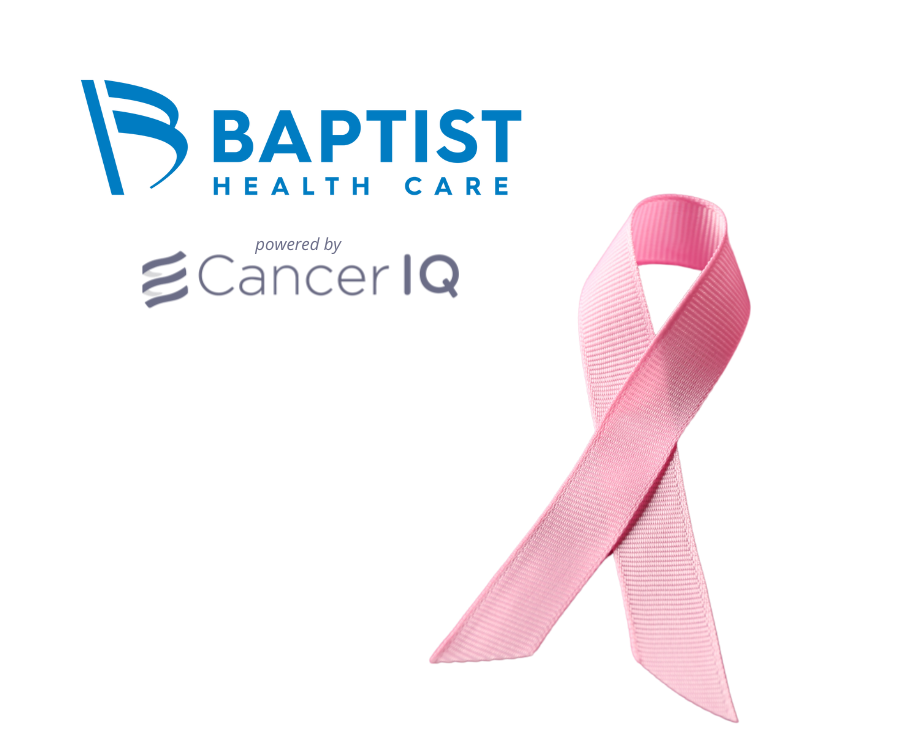High-Risk Breast Clinic at Baptist Health Care Drives Surge in Screening Breast MRIs
Setting: private, not-for-profit system
Geographic Location: Northwest Florida
Accreditation: CoC, NAPBC

Baptist Health Care, based in Pensacola, Florida, aimed to expand access to genomics and advanced breast imaging to improve early cancer detection and prevention through its high-risk breast clinic. However, inconsistent workflows across its five breast imaging centers made it difficult to ensure high-risk patients received crucial services like breast MRI. To address this, Baptist Health Care partnered with CancerIQ to streamline workflows for cancer risk assessment, genetics, and patient navigation.
CancerIQ collaborated with key stakeholders from radiology, oncology, and breast imaging, supporting comprehensive cancer risk assessment for over 30,000 patients and genetic testing for over 2,000 patients in just 21 months. CancerIQ’s platform made it easy to incorporate genomic insights into clinical decision making, while tracking and measuring outcomes — leading to a 2.2X increase in breast MRIs scheduled and a 4.2X increase in the proportion of breast MRIs attributed to the high-risk breast clinic. This shift means a significantly greater share of breast MRIs are being used for proactive screening versus diagnosis, demonstrating the clinic’s ability to promote cancer prevention and early detection. CancerIQ also helped model the $1.7 million in projected downstream revenue generated within the first 180 days, enabling the breast center to justify hiring two dedicated staff members and covering program costs for three years.
By streamlining cancer risk assessment and improving adherence to evidence-based guidelines for high-risk patient management, CancerIQ also helped Baptist align with National Accreditation Program for Breast Centers (NAPBC) and The American College of Surgeons (ACS) Commission on Cancer (CoC) quality standards.
The CancerIQ Solution
THE CHALLENGE |
THE CANCERIQ SOLUTION |
|
Workflow complexity The health system’s five imaging sites had different mammography workflows, hindering standardized risk assessment across locations. |
Workflow design services CancerIQ collaborated across radiology, oncology, and breast imaging to create a harmonized workflow for risk assessment. |
|
Limited uptake of precision health services Referral volumes to breast MRI and genetics were low due to limited patient awareness of the high-risk program and available services. |
Integrated precision health intelligence CancerIQ’s AI-powered platform leveraged the industry’s largest precision prevention dataset and the latest Tyrer-Cuzick (7 and 8), Gail, and NCCN guidelines to transform cancer risk information into hyper personalized care pathways, increasing adherence to evidence-based risk assessment, genetic testing and screening. |
|
Resource constraints The program initially operated with only a part-time registered nurse and telegenetic support from a lab vendor, limiting its ability to scale. |
Measurable impact to justify growth CancerIQ’s financial models and projections of program demand were used to make the case to health system leadership to approve hiring a full-time scheduler and a full-time nurse practitioner, ensuring sustainable growth of the high-risk breast program. |